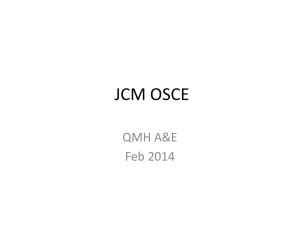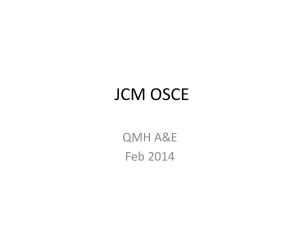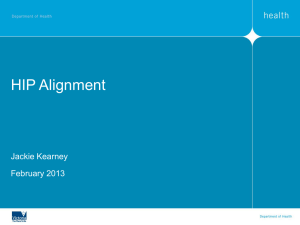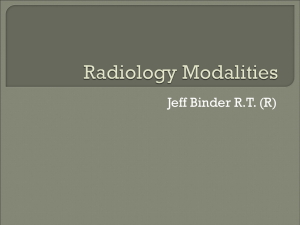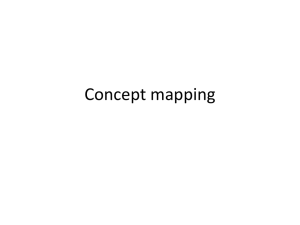JCM OSCE
advertisement
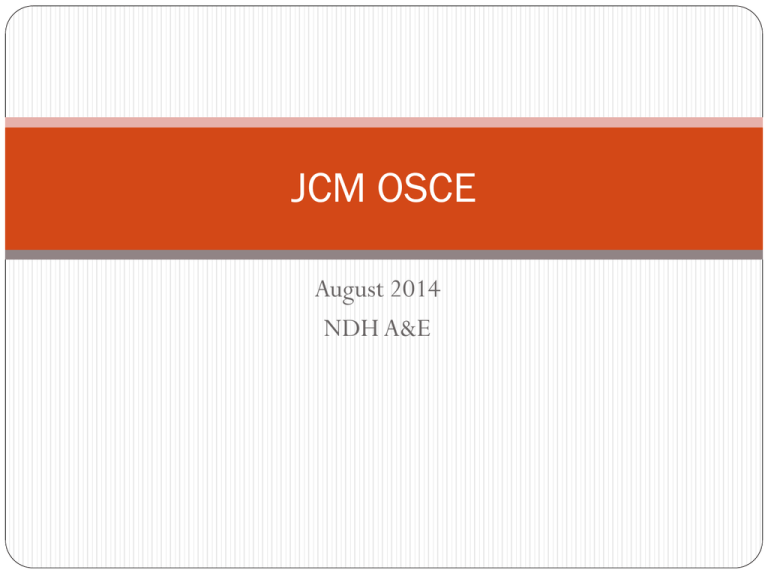
JCM OSCE August 2014 NDH A&E Case 1 M/67 Hx of DM, BPH, soft tissue sacroma Complaint of right shoulder pain for one day There is no Hx of injury P/E: There is mild tenderness over right shoulder, ROM full Xray Rt shoulder taken 1. 2. 3. 4. 5. Describe the Xray findings. What would you like to examine the patient apart from the shoulder after reading the XRay? What investigation will you order? Suggest 3 differential diagnosis. Suggest ED managements. 1. Describe the Xray findings. There is no fracture/ bony lesion seen in the shoulder region, but free gas is seen under the right hemidiaphragm. 2. What would you like to examine the patient apart from the shoulder after reading the XRay? Examine for any abdominal signs. 3. What investigation will you order? CXR ecect film 4. Suggest 3 differential diagnosis. This is likely to be the radiated shoulder pain. DDX: perforation of GU/ DU/ intestine, traumatic injury in the abdomen, post laparoscopic surgery 5. Suggest ED managements. Keep NPO monitor vitals set up 2 large IV drip, resuscitate as necessary pain relief blood (CBC, L/RFT, clotting, X-match) consult surgery Case 2 M/35 Taxi passenger involved in traffic accident Complaint of right hip pain Xray is taken 1. Describe the Xray findings. 2. What is your diagnosis? 3. What investigation you suggest? 4. What is the typical mechanism of injury. 5. What clinical features of the hip do you expect. 6. Give 2 complications of the above condition. 1. Describe the Xray findings. There is widening of right hip joint space. Right hip is in internal rotation and adducted. There is no other pelvic bone fracture. 2. What is your diagnosis? Suspected posterior right hip dislocation. 3. What investigation you suggest? CT right hip is suggested. 4. What is the typical mechanism of injury. Dashboard injury – classically is unrestrained occupant of a motor vehicle accident, especially collisions which are headon, in which the flexed knee strikes dash with hip flexed and adducted 5. What clinical features of the hip do you expect. The hip should be held slightly flexed, adducted and internally rotated, leg appears shortened, femoral head palpable in buttock 6. Give 2 complications of the above condition. Foot drop from sciatica nerve compression, avascular necrosis of the femoral head Case 3 M/62 GPH Complaint of cough for 7-8 months, no hemoptysis/ weight loss/ fever P/E: BP 155/87 p83, SaO2 100% RA. Afebrile CXR taken 1. What is the abnormality. 2. Suggest 3 investigations. 3. The above patient suddenly develop left side weakness, what do you suspect? 4. What investigation will you do? 1. What is the abnormality. There is soft tissue thicking in the right paratracheal region, this is likely to be a distorted minor fissure, whose lateral aspect is concave inferiorly and whose medial aspect is convex inferiorly, known as “Golden S sign”, suggest lung collapse with underlying CA lung. The trachea is also mildly deviated to the right side. 2. Suggest 3 investigations. Sputum for cytology, CT thorax with contrast, bronchoscopy, tumor markers suggestive of other primary 3. The above patient suddenly develop left side weakness, what do you suspect? Brain metastasis +/- intracranial hemorrhage 4. What investigation will you do? CT brain +/- contrast Case 4 F/33 GPH Presented with Rt upper toothache for one day Pain radiate to right lower jaw with difficulty in swallowing No Hx of trauma Xray neck taken 1. 2. 3. 4. 5. 6. Describe the Xray findings. What is your diagnosis. Give 3 symptoms and 3 physical signs you will look for. What are the most common involved organisms. Suggest 2 complications of the above condition. Suggest 3 ED managements. 1. Describe the Xray findings. There is prevertebral soft tissue swelling (>1 vertebrae thickness) at the C2/3 level 2. What is your diagnosis. Retropharyngeal abscess 3. Give 3 symptoms and 3 physical signs you will look for. Symptoms: Fever, sore throat, dysphagia, neck pain, dyspnoea, poor oral intake, muffled voice Signs: posterior pharyngeal edema, nuchal rigidity, respiratory distress, stridor, cervical lymphadenopathy, drooling, fever 4. What are the most common involved organisms. Cultures from retropharyngeal abscess are polymicrobia. The most common aerobic species isolated are beta-hemolytic Strept, Strept. Viridans and S. aureus. Bacteroides and Peptostreptococcus are the most common isolated anaerobes. 5. Suggest 2 complications of the above condition. Airway obstruction, mediastinitis, aspiration pneumonia, epidural abscess, jugular venous thrombosis, necrotizing fasciitis, sepsis, erosion into the carotid artery 6. Suggest 3 ED managements. Keep NPO and fluid resuscitation if necessary close monitoring of vital signs esp airway condition IV antibiotics consult ENT Case 5 M/11 NKDA GPH Sudden onset severe central chest pain for 2 hours No Hx of injury No SOB No cough but with sore throat CXR taken 1. 2. 3. 4. 5. Describe the Xray findings. What is your diagnosis? Give 2 physical signs for the above condition. What are the causes of the above condition. Suggest 2 complications of the above condition. 1. Describe the Xray findings. There is gas seen over bilateral cervical and also mediastinum region. There is no pneumothorax seen. 2. What is your diagnosis? Pneumomediastinum 3. Give 2 physical signs for the above condition. surgical emphysema, Hamman sign (precordial crepitations and diminution of HS), associated sign of pneumothorax 4. What are the causes of the above condition. Spontaneous, elevated pulmonary pressures (forceful coughing, crying, vomiting, Valsalva maneuver), Respiratory illness (COAD, asthma), organ injury (tracheobronchial rupture, esophageal injury, perforation of hollow abdominal viscus) 5. Suggest 2 complications of the above condition. Pneumothorax, tension pneumomediastinum, mediastinitis The End Thank you
